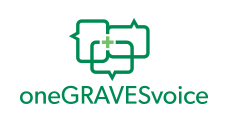Trusted Resources: Evidence & Education
Scientific literature and patient education texts
Double-Blind, Placebo-Controlled, Randomized Trial of Selenium in Graves Hyperthyroidism
source: The Journal of Clinical Endocrinology and Metabolism
year: 2017
authors: Kahaly GJ, Riedl M, König J, Diana T, Schomburg L
summary/abstract:Context:
Supplemental selenium (Se) may affect the clinical course of Graves disease (GD).
Objective:
Evaluate efficacy of add-on Se on medical treatment in GD.
Design:
Double-blind, placebo-controlled, randomized supplementation trial.
Setting:
Academic endocrine outpatient clinic.
Patients:
Seventy untreated hyperthyroid patients with GD.
Intervention:
Additionally to methimazole (MMI), patients received for 24 weeks either sodium selenite 300 µg/d po or placebo. MMI was discontinued at 24 weeks in euthyroid patients.
Main Outcome Measures:
Response rate (week 24), recurrence rate (week 36), and safety.
Results:
A response was registered in 25 of 31 patients (80%) and in 27 of 33 (82%) at week 24 [odds ratio (OR) 0.93; 95% confidence interval (CI), 0.26 to 3.25; P = 0.904] in the Se (+MMI) and placebo (+MMI) groups, respectively. During a 12-week follow-up, 11 of 23 (48%) and 12 of 27 (44%) relapsed (OR 1.13; 95% CI, 0.29 to 2.66; P = 0.81) in the Se and placebo groups, respectively. Serum concentrations of Se and selenoprotein P were unrelated to response or recurrence rates. At week 36, 12 of 29 (41%) and 15 of 33 (45%) were responders and still in remission in the Se and placebo groups, respectively (OR 0.85; 95% CI, 0.31 to 2.32; P = 0.80). Serum levels of free triiodothyronine/free tetraiodothyronine, thyroid-stimulating hormone receptor antibody, prevalence of moderate to severe Graves orbitopathy, thyroid volume, and MMI starting dose were significantly lower in responders than in nonresponders. A total of 56 and 63 adverse events occurred in the Se and placebo groups, respectively (P = 0.164), whereas only one drug-related side effect (2.9%) was noted in 35 patients on placebo + MMI.
Conclusions:
Supplemental Se did not affect response or recurrence rates in GD.
DOI: 10.1210/jc.2017-01736
read more full text
Related Content
-
International Thyroid Eye Disease Society International SymposiumThe International Thyroid Eye Disease So...
-
Comparative Analysis of Radioactive Iodine Versus Thyroidectomy for Definitive Treatment of Graves’ DiseaseBackground: Management of Graves diseas...
-
Clinical Study Data Highlighting the Impact of Teprotumumab in Patients With Active Thyroid Eye Disease to Be Presen...Horizon Therapeutics plc today announced...
-
Comparative Effectiveness of Treatment Choices for Graves’ Hyperthyroidism: A Historical Cohort StudyBackground: The optimum therapy for Gra...
-
The University of Texas Southwestern Medical CenterThe specialized endocrinologists and end...
-
Graves’ DiseaseEpidemiology: Most common cause of Thyr...
-
Mark J. Lucarelli, MD, FACSMark J. Lucarelli is a Professor in the ...
To improve your experience on this site, we use cookies. This includes cookies essential for the basic functioning of our website, cookies for analytics purposes, and cookies enabling us to personalize site content. By clicking on 'Accept' or any content on this site, you agree that cookies can be placed. You may adjust your browser's cookie settings to suit your preferences. More Information
The cookie settings on this website are set to "allow cookies" to give you the best browsing experience possible. If you continue to use this website without changing your cookie settings or you click "Accept" below then you are consenting to this.



 myBinder
myBinder




 Facebook
Facebook